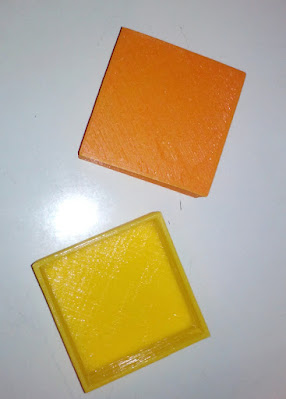For an index to all my stories click this text
In a previous story I showed how to make a simple reaction game in Javascript. You can find that story here: http://lucstechblog.blogspot.com/2024/03/javascript-reaction-game.html
Yet another story showed how you could save HTML code with Javascript on Github and make a full working webpage from these. Re-read that story here.
http://lucstechblog.blogspot.com/2023/07/using-github-for-building-website.html
By combining these 2 you will have a webpage on which a game runs that you can access with your PC, phone or tablet.
The next step is to turn this webpage into an Android APP
Websites come and websites go
Since a few years it is possible to turn HTML code with Javascript (basically a website) into a dedicated app for your Phone. One of the leading services to do so was Phonegap-Build. Phonegap-Build was a service provided by Adobe. And unfortunately they ceased maintaining it and shut the service down. An open-source version is still around. It is called Cordova and maintained by Apache. However Cordova is not as easy to use as PhoneGap was.
Then there was a webservice called Appenguin. You can still find their website here: https://appenguin.com/ This worked fine. You just filled in your name and email adress, provided a name for your app and made a link to the website where the webpage resided. Few moments later you would receive a download with an APK file. Unfortunately this service seems to have ceased operation also. I even send the original developer an email and never got any response.
However websites and services come and go and lately I have been playing with 3 web-services that turn your website into an app for free.
AppCreator24
https://www.appcreator24.com/
AppsGeyser
https://appsgeyser.com/
<WEBINTOAPP>
https://www.webintoapp.com/
The first two offer ready to use chat programs, forums, a small webshop, pre-defined games, video and audio players etc. etc. etc. All these can be turned into an app for free. This might be fun for some of you but I was interested in something else.
What all three have in common is that they can make an app from HTML code or from a website for free. And that is what I was looking for.
Revenu Model.
So how are these companies earning their money. All three offer a system to place advertisements in your app. You can earn money from these advertisements and they take a small share from that.
And they have pro-plans that offer some more functionality for a one-time or monthly fee.
Remember all services have a free plan with full functionality.
App size
This is where the differences occur. My reaction game (http://lucstechblog.blogspot.com/2024/03/javascript-reaction-game.html) in html is just a 1K file. Let's see what the services need to turn it into an app.
And there you have it.
AppCreator 24 is the most memory hungry. The app is no less then 26.45 MB And that from a 1K file.
Appsgeyser is the second in line, but still needs 17.39 MB !!!!
The best score is from WEBINTOAPP and that just takes 1.95Mb. Still al lot of memory but just 1/13th of what AppCreator24 needs and about 1/9th of what AppsGeyser needs.
Another example. I made a website for Freeboard (an IOT dashboard described here:
http://lucstechblog.blogspot.com/2019/10/freeboard.html). And then I turned that into an app with the same three services.
AppCreator24 again used more as 26MB, Appsgeyser used again around 17MB and the winner was WEBINTOAPP as that agin took just 1.91Mb.
I am not taking into account the Data and Cache memory the apps need when they are in use. If you bother to check these yourself you can see that here also WEBINTOAPP is the most economical.
But there is more..........
Are they real apps ???
Most of these services operate as follows. The app is in reality a kind of web-browser with a lot of stripped off functionality. So what happens is when you start the app it downloads the original webpage and displays that.
So what happens if you set the Wifi functionality on your phone of browser off.
Well this is what happens when Wifi is hut off on your phone/tablet and you start the AppCreator24 app.
And the same happens with AppsGeyser.
Hey ??? WEBINTOAPP does what it should do. It starts and works like it should. Even if Wifi is turned off.
Are AppCreator24 and AppsGeyser bad solutions ??
Well not exactly. They offer some functionality that WEBINTOAPP does not. AppCreator24 offers for example the possibility to send a message to all its users. Next to that it automatically updates the "app" if you make any changes in it. WEBINTOAPP does not offer this functionality.
Concluding.
If you need a chat service, pre-made games or video and audio services into your apps and offer these to friends AppCreator24 and AppsGeyser is what you should look into.
If you just want a plain app, small and capable of working off-line WEBINTOAPP is what you need. It is my first choice at this moment.
So here is the link again. Go ahead, visit the site and look around :
https://www.webintoapp.com/
Next time I am going to show you how to use WEBINTOAPP to build an app.
Till next time.
Have fun
Luc Volders














